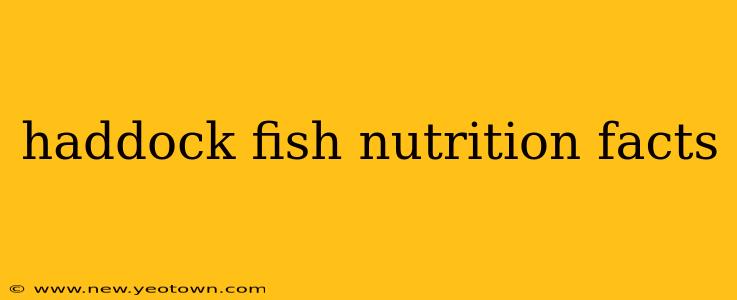The salty tang of the sea, the satisfying flakiness of the flesh – haddock is more than just a delicious meal; it’s a nutritional powerhouse packed with benefits for your health. This isn't your average fish; haddock boasts a unique profile of vitamins, minerals, and healthy fats that make it a smart addition to your diet. Let's dive into the delicious world of haddock and uncover its nutritional secrets.
My name is Alex, and I've been a passionate advocate for healthy eating and sustainable seafood for over 10 years. I've spent countless hours researching the nutritional value of various fish, and haddock consistently stands out.
What are the Nutritional Benefits of Haddock?
Haddock is low in calories and fat, making it an excellent choice for weight management. But the real story lies in its impressive nutrient density. It's a rich source of high-quality protein, crucial for building and repairing tissues, supporting a healthy immune system, and maintaining energy levels throughout the day.
Beyond protein, haddock is brimming with essential vitamins and minerals. It's particularly rich in Vitamin B12, vital for nerve function and red blood cell formation. Selenium, another key player in haddock, acts as a potent antioxidant, protecting your cells from damage caused by free radicals. Plus, it's a good source of omega-3 fatty acids, known for their heart-healthy benefits and potential role in reducing inflammation.
Is Haddock High in Mercury?
This is a common question, and thankfully, the answer is generally no. Haddock is considered a low-mercury fish, making it a safe choice for regular consumption, even for pregnant women and young children. Always check your local seafood advisories for the most up-to-date information on mercury levels in your region, however. Sustainable fishing practices also play a crucial role in ensuring the mercury content remains low.
How Many Calories are in Haddock?
A typical 3-ounce serving of cooked haddock contains around 130 calories, making it a surprisingly filling and low-calorie option compared to many other protein sources. This low-calorie count, combined with its high protein content, makes haddock an ideal component of a weight-loss or maintenance diet.
What are the Health Benefits of Eating Haddock?
The impressive nutritional profile of haddock translates to numerous health benefits:
- Heart health: The omega-3 fatty acids in haddock help lower blood pressure and triglyceride levels, reducing the risk of heart disease.
- Brain health: Omega-3s are also essential for brain health, supporting cognitive function and potentially reducing the risk of age-related cognitive decline.
- Improved immune function: The vitamins and minerals in haddock, particularly Vitamin B12 and selenium, contribute to a robust immune system.
- Reduced inflammation: The anti-inflammatory properties of omega-3s can help alleviate chronic inflammation linked to various health problems.
How Can I Incorporate More Haddock into My Diet?
Haddock is incredibly versatile. It can be baked, grilled, pan-fried, or even used in stews and chowders. Its delicate flavor pairs well with various herbs, spices, and vegetables. Experiment with different cooking methods and flavor combinations to find your favorite ways to enjoy this healthy and delicious fish. Look for sustainably sourced haddock to minimize your environmental impact while maximizing the benefits for your health.
Remember, a balanced diet is key to optimal health. While haddock offers a wealth of nutritional benefits, it's important to maintain a varied diet that includes a range of fruits, vegetables, whole grains, and other lean proteins. Consult with a healthcare professional or registered dietitian for personalized dietary advice.

